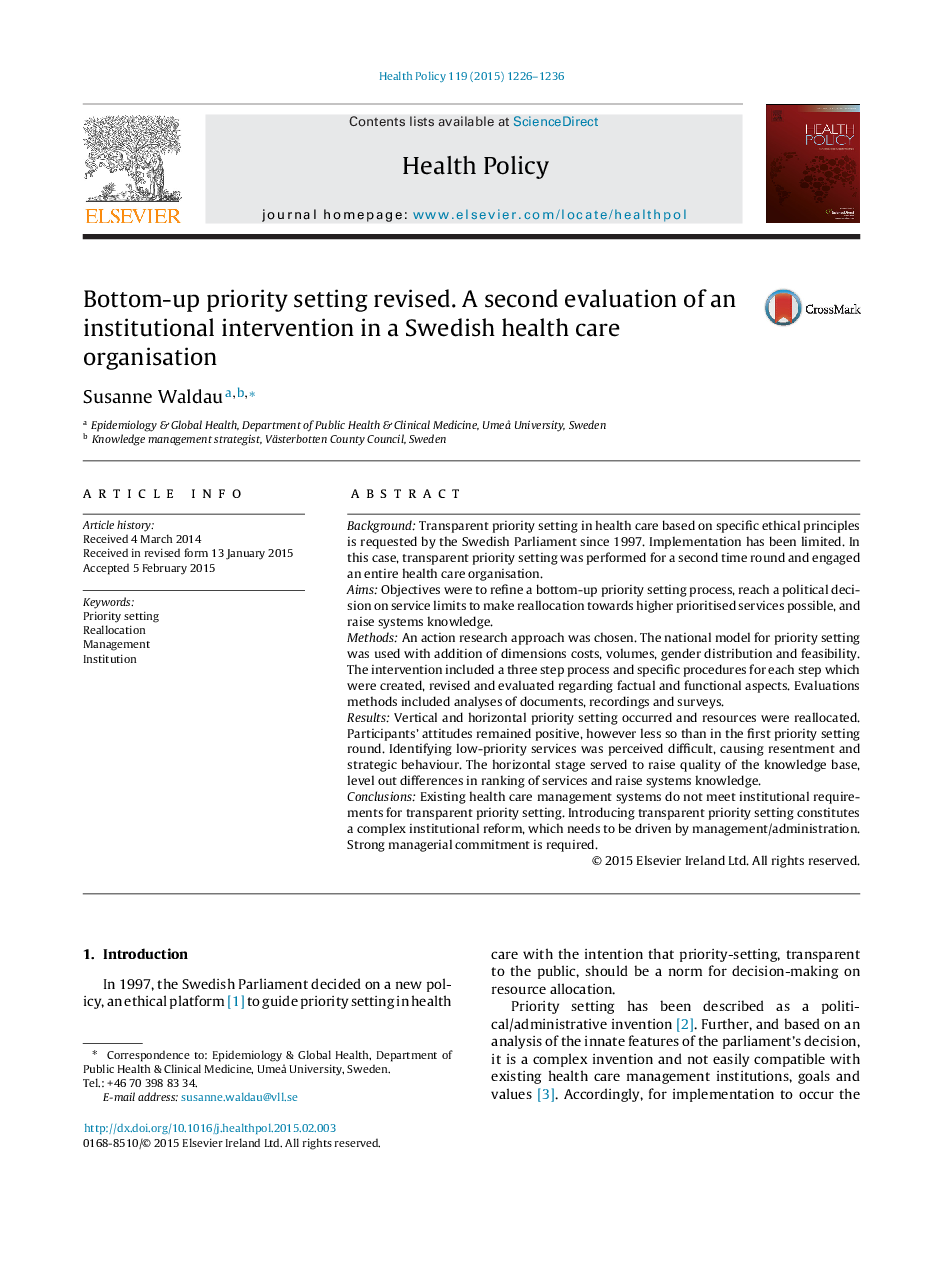| کد مقاله | کد نشریه | سال انتشار | مقاله انگلیسی | نسخه تمام متن |
|---|---|---|---|---|
| 6239017 | 1278983 | 2015 | 11 صفحه PDF | دانلود رایگان |
- Systems level reallocation was conducted by help of transparent priority setting.
- A three-step process was created and performed twice with revisions.
- All stake holders were engaged.
- Factual and functional aspects of the intervention and results were evaluated.
- Transparent priority setting requires reform of health care management systems.
BackgroundTransparent priority setting in health care based on specific ethical principles is requested by the Swedish Parliament since 1997. Implementation has been limited. In this case, transparent priority setting was performed for a second time round and engaged an entire health care organisation.AimsObjectives were to refine a bottom-up priority setting process, reach a political decision on service limits to make reallocation towards higher prioritised services possible, and raise systems knowledge.MethodsAn action research approach was chosen. The national model for priority setting was used with addition of dimensions costs, volumes, gender distribution and feasibility. The intervention included a three step process and specific procedures for each step which were created, revised and evaluated regarding factual and functional aspects. Evaluations methods included analyses of documents, recordings and surveys.ResultsVertical and horizontal priority setting occurred and resources were reallocated. Participants' attitudes remained positive, however less so than in the first priority setting round. Identifying low-priority services was perceived difficult, causing resentment and strategic behaviour. The horizontal stage served to raise quality of the knowledge base, level out differences in ranking of services and raise systems knowledge.ConclusionsExisting health care management systems do not meet institutional requirements for transparent priority setting. Introducing transparent priority setting constitutes a complex institutional reform, which needs to be driven by management/administration. Strong managerial commitment is required.
Journal: Health Policy - Volume 119, Issue 9, September 2015, Pages 1226-1236
